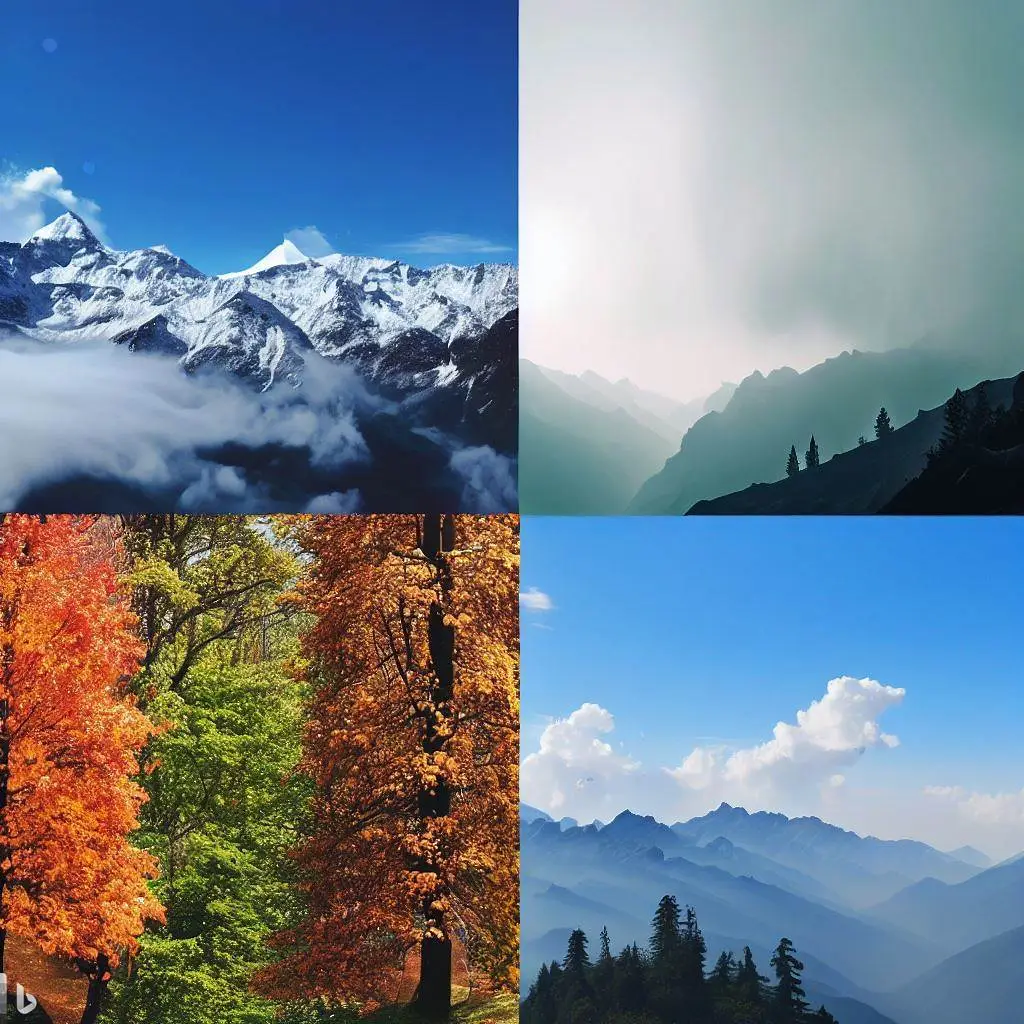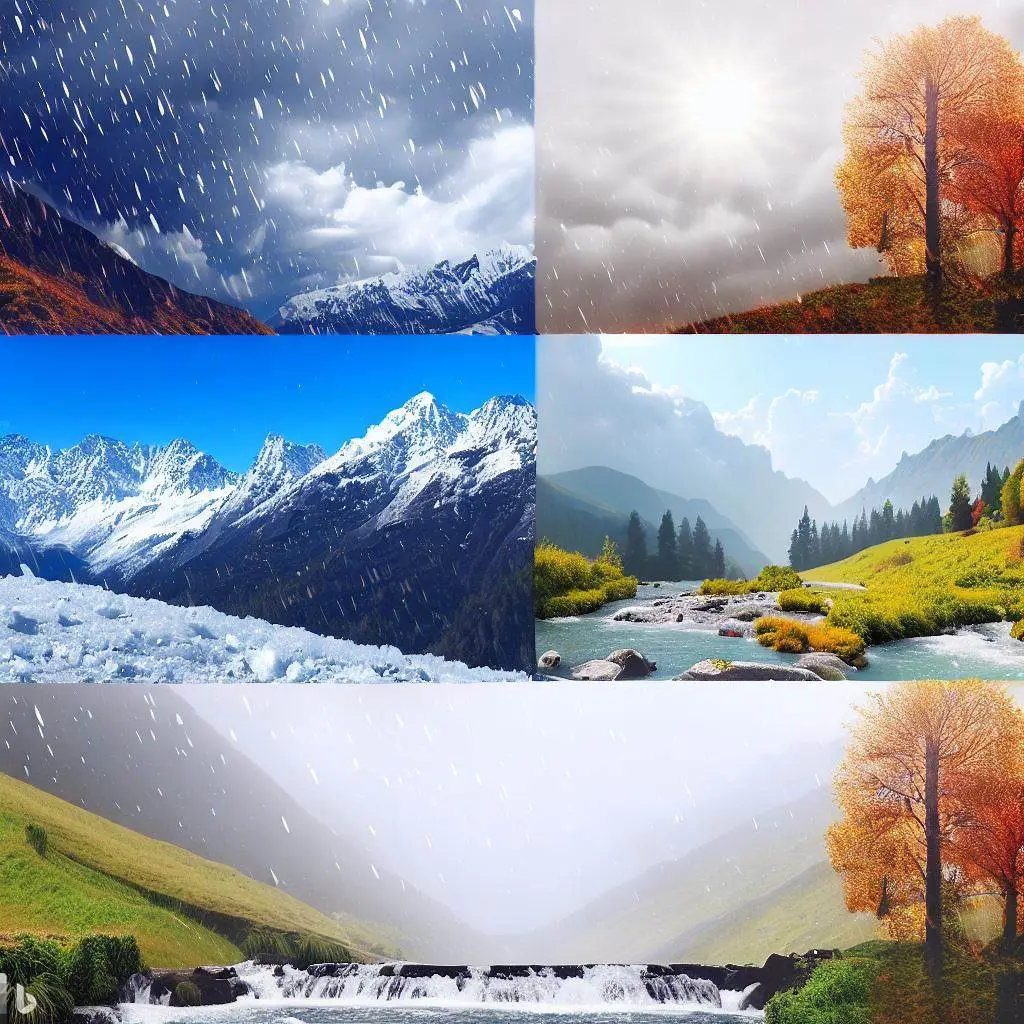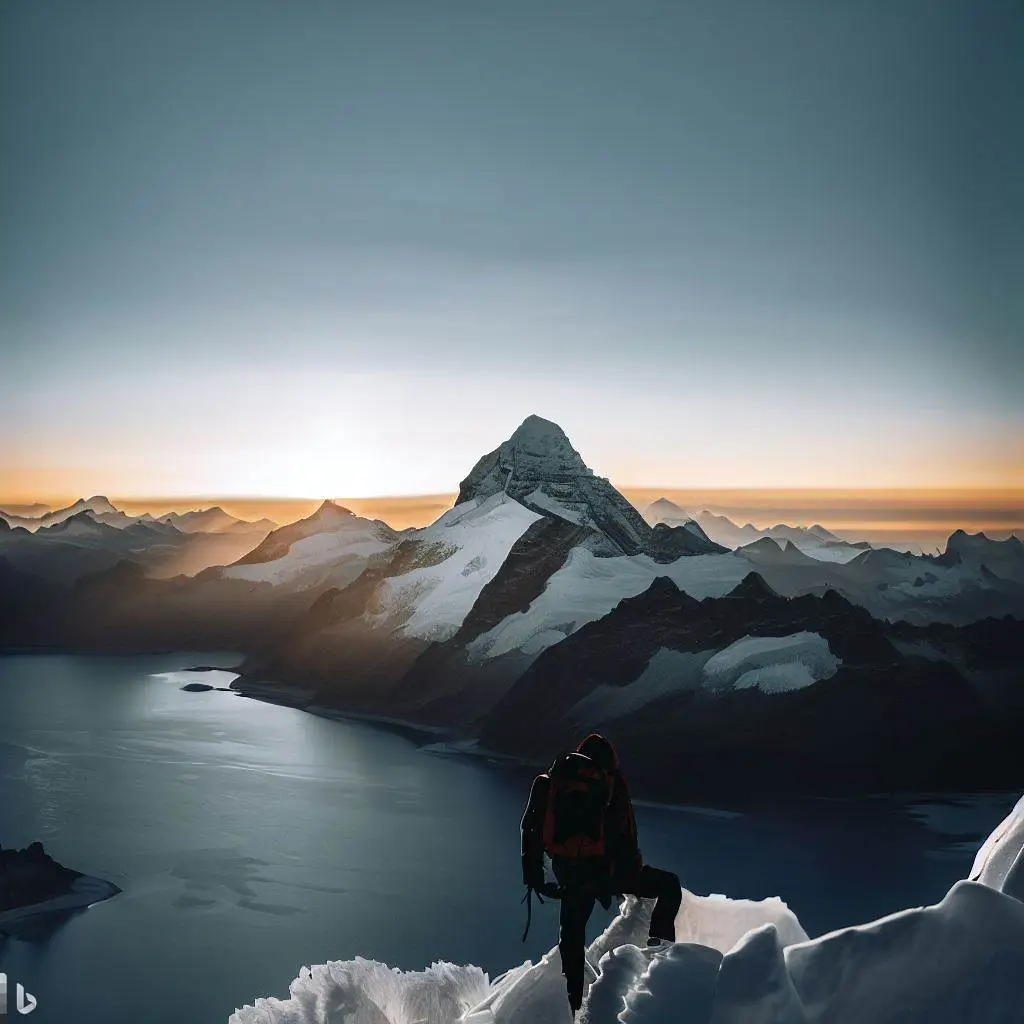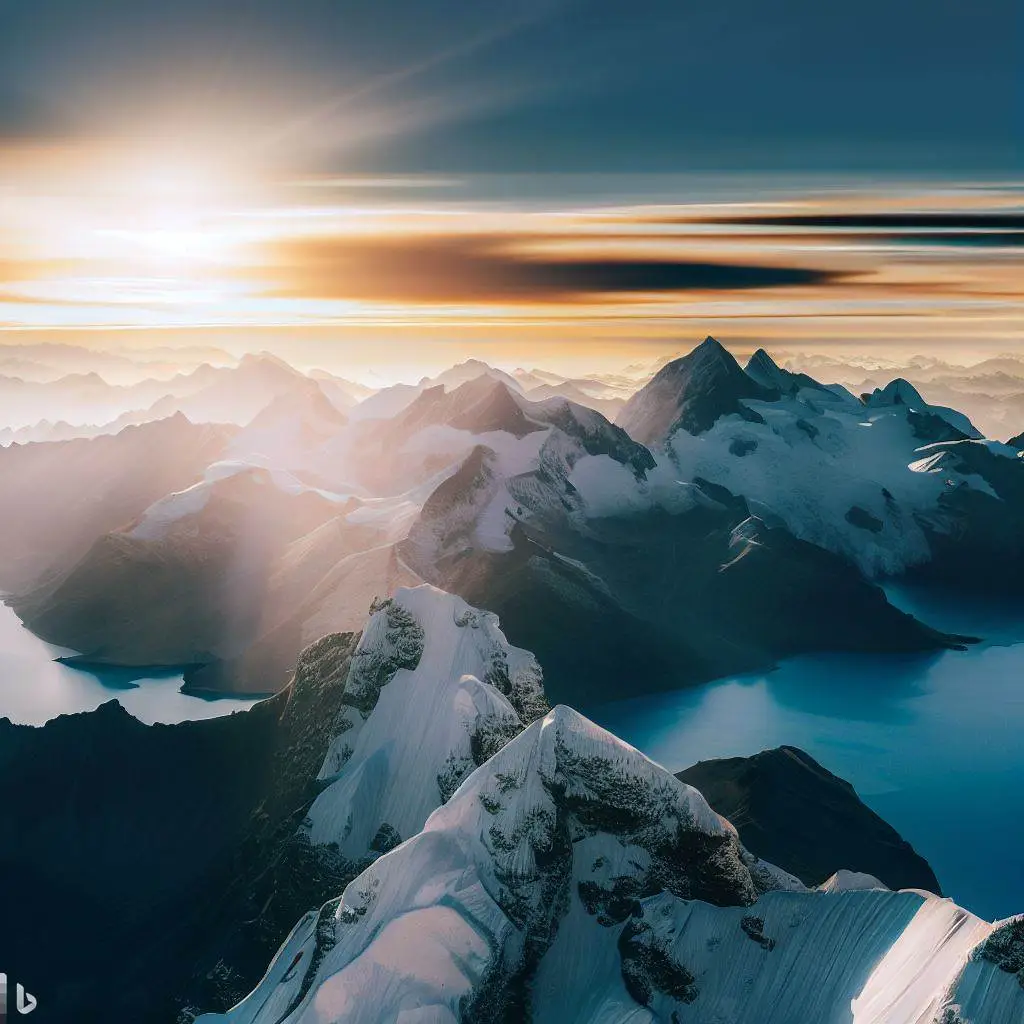Best Time To Climb Island Peak
Are you dreaming of an exhilarating mountaineering experience amidst the towering peaks of the Himalayas? Look no further, for we are here to unveil the secrets of the best time to climb Island Peak. Discover the perfect blend of favorable weather, breathtaking landscapes, and optimal conditions that will make your ascent an unforgettable journey of a lifetime. Prepare to embark on an adventure like no other!
Table of Contents
A. Overview of Island Peak
Nestled in the breathtaking Khumbu region of Nepal, Island Peak stands tall as an irresistible challenge for adventure seekers and mountaineering enthusiasts alike. Also known as Imja Tse, this magnificent mountain offers an extraordinary experience that combines trekking, climbing, and stunning panoramic views.
Rising to an elevation of 6,189 meters (20,305 feet), Island Peak showcases the grandeur of the Himalayas. Surrounded by towering peaks, including the iconic Ama Dablam and Lhotse, this majestic mountain offers an unforgettable journey through pristine alpine landscapes, ancient glaciers, and rugged terrain.
While technically classified as a trekking peak, ascending Island Peak demands more than just stamina. Climbers need to possess basic mountaineering skills, including the use of crampons and ice axes, as they navigate through challenging ice walls and steep slopes. It’s a thrilling and rewarding endeavor that pushes individuals to their limits while providing a sense of accomplishment like no other.
For more details on the Island Peak Difficulty, we have covered a separate blog for this.
Importance of choosing the right time for climbing
The Weather Factor
One crucial aspect of planning a successful climb on Island Peak is selecting the optimal time of the year. The region’s weather can be highly unpredictable, and choosing the wrong season may lead to hazardous conditions or limited visibility, diminishing the overall experience.
Springtime Splendor
For most climbers, the best time to conquer Island Peak is during the spring season (March to May). During this period, the weather tends to be more stable, with clear skies and moderate temperatures. The colorful rhododendron blooms add an enchanting touch to the landscapes, creating a picturesque backdrop for your adventure.
The Magic of Autumn
Alternatively, autumn (September to November) offers another excellent window for climbing Island Peak. With the monsoon season behind, the skies become clearer, and the surrounding mountains showcase their majestic beauty. The pleasant weather, coupled with the vibrant fall foliage, makes this time of year truly magical.
Purpose of the article
The purpose of this article is to provide aspiring climbers and adventure enthusiasts with a comprehensive guide to Island Peak. By offering an overview of this awe-inspiring mountain, highlighting the importance of choosing the right time for climbing, and sharing valuable insights, we aim to equip readers with the knowledge and inspiration necessary for a successful and memorable expedition.
Understanding the Climbing Seasons & Temperature
Climbing in Spring Season (March to May)

Weather conditions during spring Temperatures:
During the spring season, which typically spans from March to May, Island Peak experiences relatively stable weather conditions. While it is essential to remember that mountain weather can be unpredictable, climbers generally encounter more favorable conditions compared to other times of the year.
The temperatures in spring are moderate, with daytime temperatures ranging from around 15°C (59°F) to 17°C (62.6°F) at lower altitudes to -10°C (14°F) at higher elevations. Nights can be colder, dropping to around -20°C (-4°F) or lower. It is crucial to note that temperatures can vary significantly depending on the altitude and time of day.
Rainfall during spring is relatively low, reducing the chances of encountering heavy downpours that can hinder progress. The skies are often clearer during this season, offering better visibility of the stunning Himalayan vistas that surround Island Peak
Benefits of climbing in spring
Choosing to climb Island Peak during the spring season brings several advantages for mountaineers:
a. Stable Weather: Spring offers a more predictable weather pattern compared to other seasons. Clear skies and reduced precipitation enhance visibility, allowing climbers to enjoy breathtaking panoramic views and capture stunning photographs.
b. Moderate Temperatures: The temperatures during spring are generally more comfortable for climbing, especially during the daytime. This makes the ascent more pleasant and reduces the risk of extreme cold-related injuries.
c. Rhododendron Blooms: Spring brings the vibrant blooming of rhododendron flowers, which adorn the landscapes with hues of red, pink, and white. The colorful spectacle adds an extra touch of beauty to the already awe-inspiring surroundings, creating unforgettable memories.
d. Longer Days: In spring, the daylight hours gradually increase, providing climbers with more time for their expedition. Longer days offer additional flexibility for completing different sections of the climb and help ensure sufficient rest and acclimatization periods.
Check out the best Island Peak Climbing Itinerary for this season.
Challenges and considerations

While the spring season offers numerous advantages, climbers should still be aware of potential challenges and considerations:
a. Crowds: Spring is a popular time for climbing Island Peak, attracting a significant number of climbers. As a result, there might be more crowds on the trail and at base camps. It is advisable to plan accordingly and make necessary reservations in advance to secure permits and accommodation.
b. Snow Conditions: Although spring generally has lower precipitation, there might still be residual snow and ice on the route. Climbers should be prepared for potentially icy sections and be equipped with the proper gear, including crampons and ice axes, to navigate safely.
c. Avalanches: In early spring, there is a slightly higher risk of avalanches due to the melting snow and fluctuating temperatures. It is crucial to stay informed about current conditions and heed the advice of experienced guides and authorities.
d. Altitude Effects: Island Peak’s elevation demands proper acclimatization. Climbers must allow themselves enough time to adjust to the altitude, regardless of the chosen season. Adequate rest, hydration, and gradual ascent are crucial for minimizing the risk of altitude-related illnesses.
Autumn Season (September to November)
Weather conditions during autumn & Temperature:
The autumn season, which typically spans from September to November, is another favorable time for climbing Island Peak. During this season, climbers can expect generally stable and pleasant weather conditions, making it an attractive choice for mountaineers.
Autumn brings cooler temperatures as the region transitions from the warmer summer months. Daytime temperatures range from approximately 12°C at lower altitudes to 17°C or lower at higher elevations. Nights can be considerably colder, dropping to around -25°C (-13°F) or lower.
Rainfall is relatively low during autumn, similar to the spring season. The skies are typically clearer, providing excellent visibility of the breathtaking landscapes and majestic peaks surrounding Island Peak. However, it’s important to note that weather conditions can vary, and unexpected weather patterns can still occur in the mountains.
Advantages of climbing in autumn
Opting to climb Island Peak during the autumn season offers several advantages for mountaineers:
a. Mild Weather: Autumn provides a pleasant climate for climbing, with cooler temperatures compared to the summer months. The moderate temperatures during the day make it comfortable for exertion, while the colder nights help preserve snow and ice stability, reducing the risk of avalanches.
b. Clear Skies and Stunning Views: The autumn season is known for its clear skies and excellent visibility, allowing climbers to witness the awe-inspiring landscapes and panoramic views in all their glory. The vibrant fall colors of the surrounding foliage create a breathtaking backdrop, adding to the overall visual appeal.
c. Fewer Crowds: Compared to the peak season of spring, autumn tends to have fewer climbers on the route and at base camps. This can provide a more serene and less crowded experience, allowing climbers to enjoy a sense of solitude and tranquility during their ascent.
d. Post-Monsoon Conditions: Autumn follows the monsoon season, which helps clear the trails and reduces the chances of encountering muddy and slippery sections. The drier conditions make the climbing experience more enjoyable and facilitate safer progress.
Factors to consider during this season

While autumn is generally a favorable season for climbing, there are still some factors to consider:
a. Changing Weather: Although autumn is known for its stable weather, it is essential to stay prepared for sudden weather changes in the mountains. Climates in higher elevations can be unpredictable, and climbers should always be equipped with proper clothing and gear to handle potential shifts in conditions.
b. Temperature Drops: As autumn progresses, temperatures tend to drop, especially during the nights. Climbers must be well-prepared with adequate insulation and cold-weather gear to stay warm and comfortable throughout the expedition.
c. Shorter Days: As the season advances, the daylight hours gradually decrease, resulting in shorter climbing days. It is crucial to plan the itinerary accordingly, allowing sufficient time for rest, acclimatization, and completing each stage of the climb within daylight hours.
d. Availability of Services: While autumn sees fewer climbers compared to the peak season, it is still important to consider the availability of services, such as accommodation, guides, and supplies. Making necessary reservations and arrangements in advance ensures a smoother and more organized climbing experience.
Other Seasons (Winter and Monsoon)
Winter climbing (December to February)
Weather Conditions during Winter & Temperatures:
Winter, spanning from December to February, presents the most challenging conditions for climbing Island Peak. The weather during this season is harsh and extremely cold, with temperatures dropping significantly. Daytime temperatures can range from -10°C (14°F) to -20°C (-4°F), while nighttime temperatures can plummet to -30°C (-22°F) or even lower. The region experiences heavy snowfall, and strong winds are common, adding to the overall difficulty.
Limitations and Risks
Winter climbing on Island Peak poses substantial limitations and risks that climbers must carefully consider:
a. Extreme Cold: The frigid temperatures of winter create a demanding environment that requires specialized equipment, clothing, and experience to stay warm and avoid frostbite or hypothermia. Proper insulation and cold-weather gear are essential, as is a thorough understanding of cold-weather mountaineering techniques.
b. Deep Snow and Challenging Terrain: Winter brings heavy snowfall, resulting in deep snow accumulation on the slopes and the trail. This makes progress more laborious and time-consuming, requiring extra effort to navigate through the challenging terrain. Avalanches are also a significant risk during this season due to the increased snow load on the mountain slopes.
c. Reduced Visibility: Winter weather often involves low visibility due to snowstorms, fog, or cloud cover. Limited visibility can make route finding more difficult, increasing the risk of getting lost or disoriented. It is crucial to have proper navigation equipment and skills to navigate safely in these conditions.
d. Shorter Daylight Hours: Winter days have shorter daylight hours, which reduces the available time for climbing and can impact the overall pace of the expedition. Proper time management and planning become even more critical during this season
Monsoon season (June to August)
Weather Conditions During Monsoon
The monsoon season, spanning from June to August, brings heavy rainfall and unstable weather conditions to the region. Island Peak is not recommended for climbing during this period due to the high risks associated with monsoon weather.
Limitations and Risks
Attempting to climb Island Peak during the monsoon season poses severe limitations and risks, including:
a. Heavy Rainfall: The monsoon season is characterized by persistent and heavy rainfall, leading to wet and slippery trails, swollen rivers, and increased rockfall hazards. Climbing in such conditions is not only challenging but also significantly increases the risk of accidents and dangerous situations.
b. Cloud Cover and Poor Visibility: The monsoon season is marked by frequent cloud cover and poor visibility, which can make navigation difficult and increase the chances of getting lost or disoriented. The lack of visibility also restricts the enjoyment of the scenic views typically offered by the region.
c. Landslides and Floods: The heavy rainfall during the monsoon season triggers landslides and flash floods, further jeopardizing the safety of climbers. These natural hazards can obstruct the trails, create unstable conditions, and pose a significant threat to both climbers and support personnel.
d. Limited Infrastructure and Services: The monsoon season sees a significant reduction in available infrastructure, including accommodation, transportation, and support services. Many lodges and facilities close during this period due to unfavorable conditions, making it challenging to access essential resources.
Limitations and risks associated with these seasons
Both winter and monsoon seasons bring distinct limitations and risks that climbers must acknowledge:
a. Reduced Safety Margins: Winter and monsoon seasons significantly decrease the safety margins for climbers. The extreme cold temperatures and heavy snowfall of winter, as well as the heavy rainfall and increased hazards of the monsoon season, make it crucial to prioritize safety and be well-prepared with appropriate gear, equipment, and knowledge.

b. Limited Climbing Opportunities: Winter and monsoon seasons limit the climbing opportunities on Island Peak due to the challenging conditions. Climbers must carefully consider their goals and abilities before attempting to climb during these seasons. It is advisable to consult with experienced mountaineers or local authorities to assess the feasibility and risks associated with climbing during these periods.
c. Higher Technical Difficulty: Both winter and monsoon climbing on Island Peak demand a higher level of technical proficiency and mountaineering skills. The deep snow, icy conditions, and unpredictable weather require climbers to have advanced knowledge and experience in handling challenging terrains and adverse weather conditions.
d. Reduced Support Services: During winter and monsoon, support services and facilities in the region may be limited or unavailable. It can be challenging to find accommodation, transportation, or emergency assistance in case of unforeseen circumstances. Climbers must be self-sufficient, well-prepared, and equipped to handle emergencies or extended stays in remote areas.
Factors Influencing the Best Time to Climb
When determining the best time to climb Island Peak, several factors come into play, with weather and climatic conditions being of utmost importance.
Temperature and precipitation
The temperature and precipitation patterns greatly impact climbing conditions on Island Peak. Warmer temperatures during the spring and autumn seasons provide a more favorable environment for climbing, with temperatures ranging from mild to moderately cold. This allows for better comfort and ease of movement during the ascent. On the other hand, winter brings extremely cold temperatures, while the monsoon season experiences heavy rainfall. Both winter and monsoon conditions can be challenging and increase the risks associated with climbing.
Wind speed and visibility
Wind speed and visibility are crucial factors to consider when planning a climb. High wind speeds can make the ascent more difficult, affecting balance and creating hazardous conditions, especially on exposed sections of the route. Optimal climbing conditions include moderate wind speeds that allow for a safer and more enjoyable experience. Additionally, good visibility is essential for route finding and navigation, ensuring climbers stay on track and avoid potential hazards.
Impact on climbing experience and safety
The weather and climatic conditions directly influence the overall climbing experience and safety on Island Peak. Favorable weather conditions contribute to a more enjoyable and successful climb, allowing climbers to appreciate the stunning scenery and have a memorable experience. Conversely, adverse weather conditions can result in discomforts, decreased visibility, and increased risks, such as avalanches or whiteouts. It is crucial to prioritize safety and choose a time when weather conditions are most conducive to a safe and rewarding climb.
Peak Crowds and Availability
High season vs. low season
The climbing season on Island Peak can be divided into high season and low season, each offering distinct advantages and considerations.
High Season: The high season for climbing Island Peak typically coincides with the spring and autumn months, from March to May and September to November, respectively. During this period, the weather conditions are generally favorable, with milder temperatures and lower chances of precipitation. The high season attracts a larger number of climbers, creating a vibrant and bustling atmosphere on the mountain. It provides an opportunity to connect with fellow climbers, share experiences, and enjoy a sense of camaraderie. However, it’s important to note that popular routes and accommodations can be crowded, and permits may be in high demand.
Low Season: The low season for climbing Island Peak includes the winter months from December to February and the monsoon season from June to August. During these periods, the number of climbers significantly decreases, resulting in a more tranquil and solitary experience on the mountain. While the weather conditions can be more challenging, with colder temperatures or heavy rainfall, the low season offers a unique opportunity for adventurers seeking solitude and a greater sense of wilderness. It’s crucial to be well-prepared and have the necessary skills and experience to tackle the potential difficulties associated with climbing during the low season.
Availability of permits and accommodations
Obtaining the necessary permits and securing accommodations are vital considerations when planning your climb to Island Peak.
Permits: Climbing Island Peak requires obtaining various permits, including a climbing permit issued by the Nepal Mountaineering Association (NMA). During the high season, permit availability may be limited due to the higher demand. It is advisable to apply for permits well in advance to ensure availability and avoid any last-minute complications. In contrast, during the low season, obtaining permits is generally more accessible due to the decreased number of climbers. However, it is still essential to check the permit requirements and comply with all necessary regulations.
Accommodations: Island Peak base camp offers basic teahouse accommodations, but during the high season, these can fill up quickly. It is recommended to make advance reservations to secure a place to stay. In the low season, due to the reduced number of climbers, finding accommodations may be easier, and reservations may not be necessary. However, it’s crucial to be prepared for the limited availability of services and facilities during this period.
Considerations for a more peaceful experience
For those seeking a more peaceful and serene climbing experience on Island Peak, the following considerations are worth keeping in mind:
Choosing the Low Season: Opting to climb during the low season can provide a quieter and more serene experience. With fewer climbers on the mountain, you can enjoy a greater sense of solitude and tranquility amidst the stunning natural surroundings. However, it’s important to assess your skills and experience level, as the low season may come with additional challenges and risks.
Alternative Routes and Timing: Exploring alternative routes and timing your climb strategically can help avoid crowds and enhance your experience. Consider less-traveled routes or plan your ascent during off-peak hours to encounter fewer climbers on the trail.
Engaging Local Guides: Engaging the services of experienced local guides who are familiar with the mountain can be invaluable. They can provide insights into quieter routes, suggest less busy periods, and ensure your safety throughout the climb.
Respecting Nature and Local Culture: To enhance your peaceful experience, it is essential to respect the natural environment and local culture. Leave no trace by following responsible trekking practices, such as proper waste disposal and minimizing your ecological footprint. Interact respectfully with the local communities, learning about their traditions and customs, and contributing positively to the local economy.
Flexibility and Patience: Maintaining a flexible mindset and practicing patience can greatly contribute to a more peaceful experience. Embrace unforeseen circumstances, such as weather changes or delays, with a positive attitude. Adjust your itinerary if needed, allowing for spontaneous moments of relaxation and appreciation of the surroundings.
Personal Preparedness: Being well-prepared physically and mentally is crucial for a peaceful climbing experience. Train and condition your body prior to the climb, ensuring you have the necessary strength and endurance. Develop mental resilience to cope with challenges and unexpected situations that may arise. Having the right gear, including appropriate clothing and equipment, is essential for your safety and comfort.
Research and Planning: Conduct thorough research and plan your climb in advance to identify quieter periods and lesser-known routes. Explore resources such as guidebooks, online forums, and local recommendations to gather information and insights. This preparation will enable you to make informed decisions and optimize your chances of enjoying a more peaceful and fulfilling climbing experience.
Tips for Choosing the Best Time
Consultation with Local Experts and Guides
When deciding on the best time to climb Island Peak, it is valuable to seek advice from local experts and experienced guides. These individuals possess in-depth knowledge of the region and can provide valuable insights into the optimal climbing seasons. Consultation with local experts can help you understand the current conditions, weather patterns, and any specific considerations for Island Peak. Their expertise will assist you in making an informed decision and ensure a safe and successful climbing experience.
Considering Personal Preferences and Priorities
Another important aspect to consider when choosing the best time to climb is your personal preferences and priorities. Reflect on what matters most to you during your climbing expedition. Are you seeking a challenging adventure with a higher level of difficulty? Or are you more inclined towards a peaceful and less crowded experience? Consider factors such as temperature, weather conditions, crowd levels, and personal comfort. Evaluating these aspects against your preferences and priorities will help you identify the most suitable time to embark on your Island Peak climb.
Balancing Weather, Crowds, and Personal Factors
Balancing various factors is key to selecting the optimal time for your climb. One of the crucial considerations is the weather. Assess the climate conditions during different seasons, including factors such as temperature, precipitation, wind speed, and visibility. Additionally, take into account crowd levels during high and low seasons. While high seasons may offer more favorable weather, they can also attract larger numbers of climbers. Conversely, low seasons may offer fewer crowds but might present more challenging weather conditions.
Furthermore, don’t forget to account for your personal factors. Evaluate your physical fitness, climbing experience, and comfort level in different weather conditions. Consider any time constraints, travel schedules, or other commitments that may influence your availability for the climb. By balancing weather, crowds, and personal factors, you can determine the best time that aligns with your preferences, abilities, and circumstances.
FAQ:
How long does it take to climb Island Peak?
The duration to climb Island Peak varies, but typically it takes around 16-20 days, including acclimatization and trekking to the base camp.
Can a beginner climb Island Peak?
While Island Peak is a challenging climb, with proper training, preparation, and guidance from experienced climbers, beginners can attempt to climb it. However, prior climbing experience and good physical fitness are recommended.



